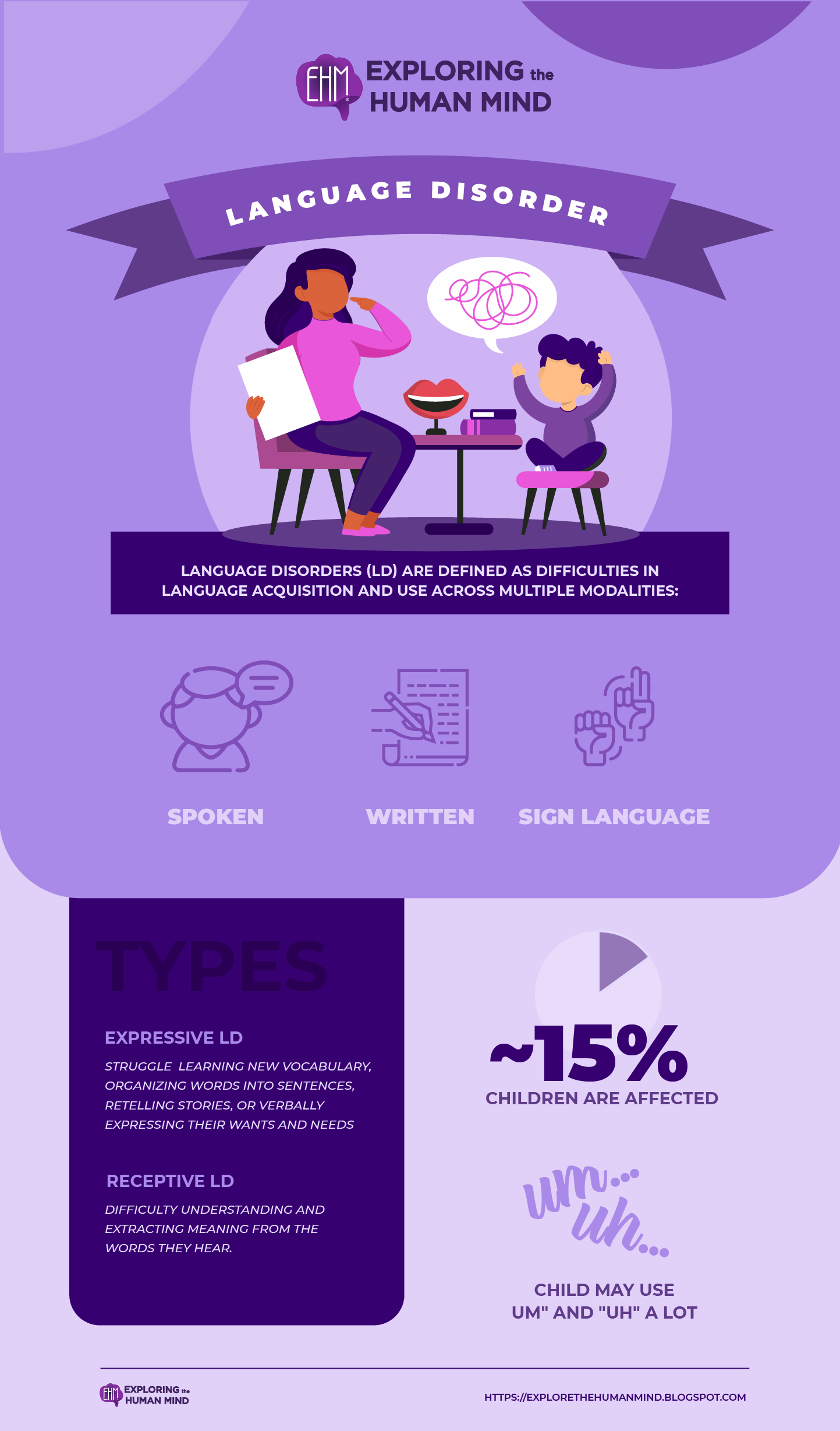Language disorder
- Syntax
- Semantics
- Phonology (sound system)
- Morphology (word system)
- Pragmatics

vectors by Freepick; graphic design by Vadot
Symptoms
Language disorders are frequently discovered in childhood. Because they can't think of the right word, your child may use "um" and "uh" a lot.
Other symptoms include:
- Reduced vocabulary in comparison to other children of the same age
- Limited ability to form sentences
- Impaired ability to use words and connect sentences to explain or describe something
- Reduced ability to have a conversation
- Leaving words out
- Saying words in the wrong order
- Repeating a question while thinking of an answer
- Confusing tenses (for example, using past tense instead of present)
Some of these symptoms are normal parts of language development. However, if several of these issues persist and do not improve, your child may have a language disorder.
Statistics
Language disorders make it difficult for people to express themselves and understand what others are saying. This has nothing to do with hearing problems. Language disorder, also known as receptive-expressive language disorder in the past, is common in young children. According to the University of Mississippi Medical Centre, it affects 10 to 15% of children under the age of three. Language ability is generally more stable by the age of four and can be measured more accurately to determine whether or not a deficit exists.
Language impairment affects between 6 and 8 million people in the United States. Approximately 3.3% of children aged 3 to 17 had a language disorder in the previous 12 months.
Types
Language disorders are classified into two types. Understanding their differences is critical to getting your child the assistance they require.
- Expressive language disorder: Children with an expressive language disorder may struggle with learning new vocabulary, organizing words into sentences, retelling stories, or verbally expressing their wants and needs. This is especially frustrating for children because they know what they want to say but can't produce legible sentences when they speak.
- Receptive language disorder: Children have difficulty understanding and extracting meaning from the words they hear. They may struggle to understand what others are saying or to interpret written words. As a result, they may struggle to respond to questions, or they may respond in an illogical manner.
In some cases, children may have problems with both expressive and receptive language.
These children have trouble both using and understanding language.
Reference:
What to Know About Different Types Communication Disorders. Verywell Mind.(2022). https://www.verywellmind.com/communication-disorder-types-5220602#toc-types-of-communication-disorders
Chitra Badii. (2012, July 25). Developmental Expressive Language Disorder (DELD). Healthline; Healthline Media. https://www.healthline.com/health/expressive-language-disorder-developmental#outlook
What Is a Language Disorder - Common Causes, Symptoms, and Treatment. (2022). Expressable. https://www.expressable.com/services/language-disorders#what-is-a-language-disorder






Comments
Post a Comment